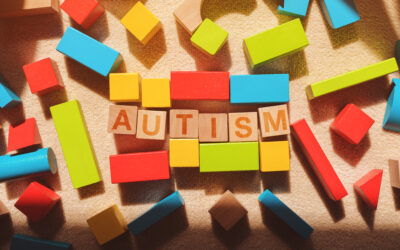By Ally Dube, M.S. BCBA, LABA and Lanna Hecht, M.Ed. BCBA
Published on June 26, 2023
Disclaimer: This article contains content regarding traditional pediatric feeding disorders for individuals diagnosed with autism spectrum disorder (ASD). Other populations may require additional treatments. Additionally, this content is not meant to constitute clinical advice, offer treatment recommendations, or to provide any other guidance with respect to feeding concerns. Prior to beginning any feeding program, your child should be evaluated by a medical professional.
Introduction
Feeding challenges are relatively common among children with autism spectrum disorder (ASD). This article discusses three types of feeding challenges, including:
- food selectivity,
- food rigidity, and
- food refusal.
The intensity of feeding challenges may vary among children, but it is estimated that 1-5% of all childhood hospital admissions are for ‘Failure to Thrive’, a condition that is correlated with feeding disorders. Statistics range widely, with estimates between 5%-20% of children in the neurotypical population are diagnosed with feeding disorders.
Children of all backgrounds can have a feeding disorder. Groups of children who are more likely to be diagnosed with a feeding disorder include premature infants, children with Failure to Thrive, children with autism, and children with various genetic syndromes. “The prevalence of feeding disorders in children with disabilities ranges from 40% to 80%” (Nationwide Childrens, 2023).
Top 3 Factors Contributing to Feeding Issues in Children with Autism
While the exact causes of feeding concerns are not fully understood, there are several factors that may contribute to these challenges. We offer three distinct profiles of feeding challenges for parents and caregivers to consider.
#1: Food Selectivity
Many children with autism have enhanced sensory systems, which can affect their interaction of taste, texture, smell, and the appearance of food. Certain tastes, textures, or smells may be preferred, which may make them more likely to reject certain foods. For example, these children may be averse to certain textures, such as mushy or crunchy foods, or they may find strong flavors overwhelming. We offer the classification of this category as food selectivity.
Children with food selectivity behaviors may eat regularly, are likely gaining weight, and may show no immediate signs of a lack of growth or development. Despite this, there may be emerging or consistent behavioral components related to eating. In our experience, some common behaviors may include:
- turning their heads away when a spoon is presented,
- closing their mouth or pushing away non-preferred foods,
- restricting the amounts and/or variety of food(s),
- eating only a handful of preferred foods (which may or may not have varying textures, flavors and tastes).
Traditionally speaking, one category of food may be accepted (e.g., chips, specific colors of foods, crunchy textures), but other textures might be rejected. Furthermore, if the child is engaging in behaviors that impact the social environment or conflict with family values, these behaviors should be examined. In general, if behaviors emerge that limit, impact or make the eating experience more difficult or adverse to the family, these may be red flags and a cause for concern, despite the child’s normal growth and development.
Some frequently observed examples of ways in which food selectivity may impact family mealtimes and family values include the requirement for the parent to make two meals (one meal for the family and another different meal for the child). This is a common challenge and it can be very frustrating for families to navigate; for example, the child will only eat chicken nuggets and french fries when the rest of the family is eating grilled chicken with veggies. Moreover, expanding the food options and choices for the family may prove to be extremely difficult when the child is reluctant to try new foods, or when the family focuses on healthy food choices and the child prefers chips, candy and soda. When siblings are involved, there may be questions about why one child is permitted access to unhealthy food while they are restricted to eating healthy foods. Siblings may not understand the challenges that children with ASD face. Explaining why one child is eating differently may be an opportunity to teach acceptance and toleration of their sibling’s exceptionalism.
#2: Rigidity and Routine
Children with autism often thrive on routine. Changes in their environment or daily routines can be challenging for them; feeding issues often arise as a result. Therefore, children may prefer to eat the same foods repeatedly, and they may resist trying new foods due to the uncertainty and unpredictability associated with unfamiliar foods. We classify this category as food rigidity.
Examples of rigid eating behaviors include:
- only eating a certain brand of food,
- eating a certain number of pieces of food,
- using a specific plate,
- only eating at home while sitting on the couch,
- using a specific cup or eating utensil,
- sitting only in one place at the table,
- eating only while watching their preferred video on YouTube while sitting on their father’s lap.
These children develop ‘rules’ for when, how and what type of food is ingested and under what conditions eating occurs. Rigidity may also include engaging in rigid eating patterns based on the location or the environment. If the child doesn’t have rigid eating behaviors with the acceptance of food, but they will only eat in certain locations, this warrants an assessment. If rigid behaviors extend to social contexts, this causes stress for the family, despite the fact that the child may be eating a variety of foods. (For example, it may be difficult for the family to go to a restaurant.) Remember, any rigid pattern of behavior around food acceptance is a cause for concern.
Rigid eating is also defined as “avoidant/restrictive food intake disorder (ARFID)” according to the 2013 version of the Diagnostic and Statistical Manual of Mental Disorders, 5th Edition (DSM-5). To meet the diagnostic criteria, individuals must demonstrate weight loss, a nutritional deficiency, require supplementary nutrition dependency, and there must be disruption to the individual’s psychosocial functioning. It’s important to note that the DSM-5 diagnostic criteria is not meant to be exhaustive, as “avoidant” and “restrictive” are defined loosely. As such, selective, rigid and refusal eating patterns are lumped into one category encompassing all profiles. This addition to the DSM-5 attempted to identify the medical definition related to feeding disorders and is meant to be used as a tool for diagnostic purposes. If left untreated, minor feeding concerns may evolve into more severe forms, so early evaluation is critical. If your child demonstrates any behaviors across all profiles, this is cause for an evaluation with a specialist.
#3: Food Refusal
It is important to note that rigid eating patterns may also lead to food refusal behaviors. Likewise, food selectivity can also lead to food refusal. Food selectivity, rigidity and refusal are three related but distinct concepts when it comes to children’s eating behaviors. Food refusal refers to a child’s outright rejection or refusal to eat specific foods, certain types of foods or all foods. Food refusal involves a consistent and persistent avoidance or resistance towards consuming particular foods, regardless of the reason behind the refusal. Food refusal can manifest as a strong negative reaction, such as crying, gagging, vomiting, engaging in aggressive behaviors, spitting out the food, or pushing or throwing food away. More severe forms of food refusal include the failure to ingest any food or liquids, and this requires immediate medical treatment that may involve surgical interventions to remediate.
Additional Considerations and Factors That May Lead to Feeding Difficulties
In addition to the three profiles outlined above, there may be additional considerations and factors which impact feeding difficulties. These may include oral motor difficulties and co-occurring medical conditions and environmental contingencies.
Oral Motor Difficulties
Some children with autism may experience oral motor difficulties, which can impact chewing, swallowing, and the coordination of the mouth muscles involved in eating. These challenges can make certain foods more difficult to consume comfortably, leading to food selectivity, rigidity or refusal behaviors. Anatomical or functional conditions, such as cleft lip/palate and esophageal stricture, deficits in oral-motor development (no chewing), or gastrological or neurological conditions are all important factors.
Co-Occurring Medical Conditions & Environmental Contingencies
Children with autism often have co-occurring conditions, such as gastrointestinal issues, or food sensitivities or allergies, which can contribute to food selectivity. Certain gastrointestinal issues or food allergies may cause discomfort or pain, leading to the avoidance of specific foods. Additionally, if the child has a history of intubation as an infant, has had surgery to remove their tonsils/adenoids, or has received surgery to repair a hernia or esophageal stricture, there may be a history of pain associated with eating. This may lead to fear and avoidance of food, even after the discomfort or pain has been eliminated. These behavioral patterns are directly related to the motivation to eat food, which may require behavior analytic treatment to address.
It’s important to note that the eating environment may directly impact a child’s decision to accept or refuse foods. There are likely behavioral contingencies that influence food selectivity, refusal and rigidity.
In particular, rigidity around food can spill over into the physical environment. These contingencies often include the presentation of food, the use of specific utensils, the location of where the child is seated when eating, and whether electronics or preferred people or toys are present during the meal. These contingencies may be ‘rules’ that the child has created, which self-define their eating environment. Outside of this environment, eating may cease until the conditions are provided. Moreover, a failure to generalize these rules to other locations may mean that the child will eat at home when all of the environmental contingencies are present, but will often fail to eat at a restaurant or at a friend’s home. Other contingencies include the history of reinforcement for escaping eating non-preferred foods and the reinforcement of always creating an environment that meets the child’s expectations. While subtle, these cues within the environment may be directly attributed to whether or not the child develops selective or rigid eating patterns.
Identifying and Assessing Quality Providers
Making the decision to seek treatment for a feeding concern is an individual decision. We recognize that it may be overwhelming to identify what type of provider is qualified to support your child. When determining that feeding concerns should be addressed, there are a variety of treatment locations and provider types. Traditionally, Speech Language Pathologists (SLP), Occupational Therapists (OT), Nutritionists, Gastroenterologists, Psychologists and Behavior Analysts may work alone or in conjunction with a multidisciplinary team. Each provider has an area of specialty, and as such it’s not uncommon to have many people working on the same team.
Regardless of the provider type, all assessments should include direct and indirect assessment measures. A direct assessment includes an observation of the child during a meal. Indirect assessments are typically parent interviews, feeding logs, questionnaires and/or rating scales. When considering feeding services, it’s a good idea to start with your child’s primary care provider. Talk with the PCP and let them know what concerns you’re having and what behaviors you’re seeing, as the PCP may decide to make a referral to a specialist. A Developmental Pediatrician or Pediatric Feeding Specialist may also be involved. If you’re not satisfied with the recommendations you’re receiving, you have the right to seek a second opinion. Many specialty providers have long waiting lists, and it’s important to weigh your options for provider types and to seek a highly qualified provider.
Top ten questions to ask a potential provider:
- What is your educational background and training in feeding therapy?
- Are you licensed or certified in any relevant disciplines (e.g., speech-language pathology, occupational therapy, registered dietitian)?
- How many years of experience do you have in working with children with feeding difficulties?
- Can you provide examples of feeding challenges or disorders that you have successfully addressed in the past??
- Are you familiar with and experienced in working with specific populations (e.g., infants, children with autism spectrum disorder, individuals with sensory processing difficulties)?
- Do you collaborate with other professionals involved in feeding therapy, such as speech-language pathologists, occupational therapists, or registered dietitians?
- How do you involve families in the feeding therapy process and provide support to parents/caregivers?
- How do you ensure carry over of skills outside of therapy to ensure that feeding goals are maintained after discharge?
- Can you provide references or testimonials from previous clients or their families?
- Are you up to date with the latest research and evidence-based practices in feeding therapy?
Conclusion
While many neurotypical children may have issues related to feeding, the instances of feeding issues are significantly higher in children with autism and other developmental disabilities. Due to a number of factors that affect this population of children, it is very helpful to identify if the feeding issues are related to food selectivity, food rigidity, or food refusal, as the treatment options can vary depending on which of these situations is applicable.
Final note: Even if your child is getting proper nutrition, you may still be concerned if you are struggling when it is time to feed him/her. If your child exhibits some of the behaviors described in this article, please document your observations and reach out to your pediatrician and/or other experts for further guidance.
About Fundamental Development ABA
FUNdamental Development ABA, LLC is an agency specializing in early intervention utilizing the principles of Applied Behavior Analysis. We bring the “fun” back to fundamental life skills. We focus on working with toddlers and preschoolers to maximize this precious window of learning when their brains have the most plasticity and give them the best chance for success later in life. To learn more, visit our website at www.fundamental-aba.com.






